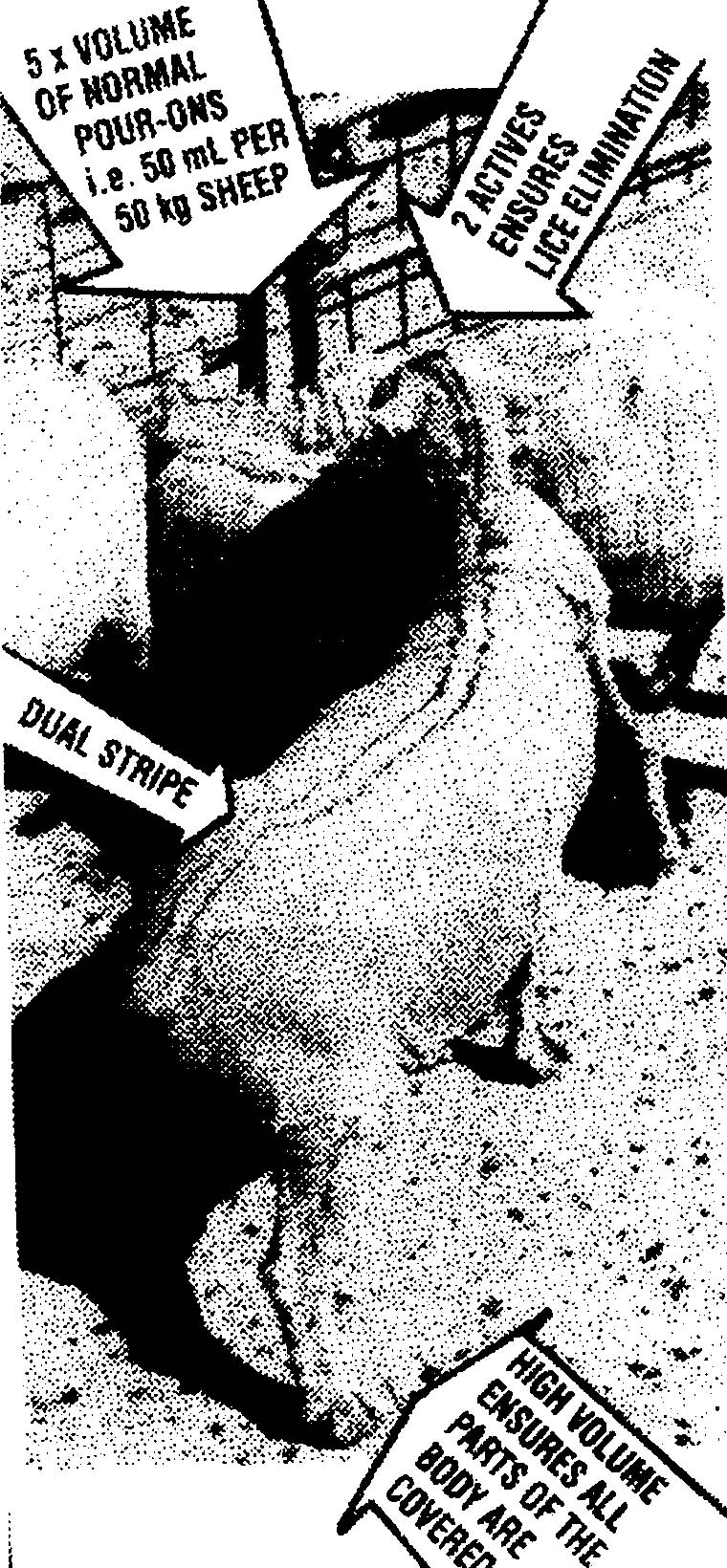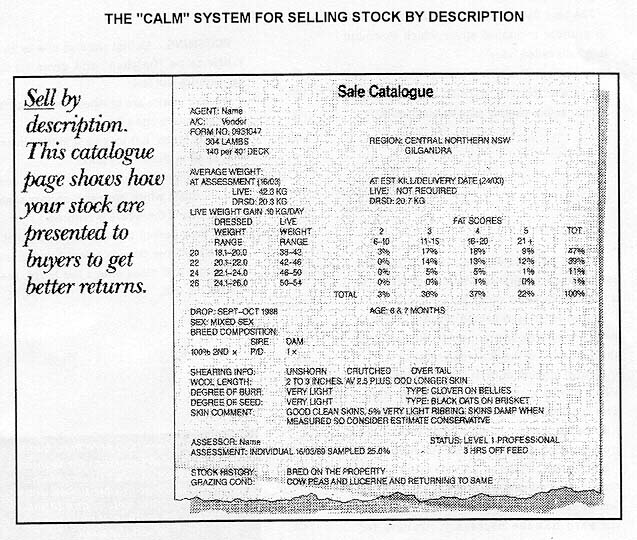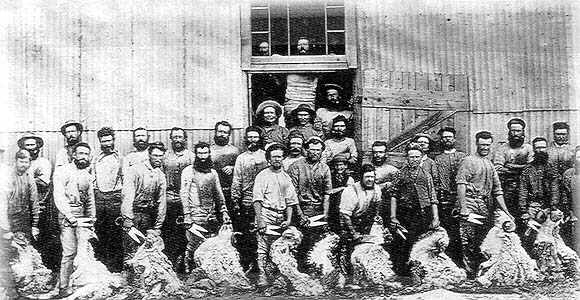SHEEP
HUSBANDRY
Sheep
farming as a rural activity is subject to the vagaries of the
Australian climate. For example:
- Whether or not
feed will be available for lambs in autumn, winter or spring
- When it is warm
enough to shear for safety
- When it is too
hot to mate rams
- When the grass
seeds are most troublesome
- When blowflies
are at their worst
- When rains can
cause the hatching of worm eggs.
TIME
OF SHEARING
The time of
shearing is the most important date to be fixed in the sheep year. It
begins as early as May or June in the warmer parts of Queensland and
later as one moves south. In the colder parts of NSW and Victoria
sheep are usually shorn in October or November. Skin parasite control
follows
shearing because parasites are more easily killed when
the wool is short. Other procedures have to be timed according to
the local climate.
MATING
Ewes need good
feed just before lambing and for some time after. The season when
the feed is available usually decides the time of mating. Lambing
occurs 150 days or 5 months after mating. Sheep breed best in the
autumn months but can only be mated then if there promises to be
enough spring feed for the lambs.
Spring lambing is
popular in the colder parts of NSW and Victoria and in some western
areas the sheep being mated in April-May. All mating should be
completed within a short a time as possible (not more than 6 weeks)
with 2 or 3% of rams being used. “Flushing” is the practice of
putting all breeders onto good feed 2 or 3 weeks before joining them.
This will increase
the lambing rate.LAMBING: Six weeks before ewes are due to lamb they
should be crutched, wigged and put into a lambing paddock where they
can be kept undisturbed and with good feed. At 9 weeks and at 3 weeks
before lambing they may be vaccinated to prevent entero-toxaemia
or pulpy kidney. As soon as lambing begins the ewes should be
constantly supervised and help given to any ewes requiring it.
Lambing losses occur from cold, feral pigs, wet, foxes and pregnancy
toxaemia if not properly managed.
MARKING
Marking occurs 3-6
weeks after lambing. All lambs should be marked as follows:
- EAR MARKING
The cutting of a
registered mark in the right ear of ewe lambs and the left ear of ram
lambs.
- AN AGE MARK
A mark in the
other ear so that the age of the sheep is easily seen during drafting
and culling.
- RAM LAMBS
Not required for
breeding are castrated becoming dry sheep or wethers.
- DOCKING
Of the tail at
the 2nd or 3rd joint so that the crutch remains
drier and therefore, less subject to fly strike.
- INOCULATED
With a 5 in
1 vaccine. Losses can occur though the use of non sterile instruments.
TOOLS
FOR TAGGING
WEANING
Lambs
are commonly weaned at 4-5 months of age. Lambs are weaned by
separating from their mothers and put into sheltered paddocks with a
good water supply, and with young green feed such as improved
pasture. This is a high danger period for worm infestation. The main
symptom is a lack of weight gain for example, merino lambs should
gain about 700 grams per week. If the gain is less then they are
probably infested with worms.
CLASSING
On a breeding
property each year more ewes are added to the flock and therefore,
the grazier must class to decide which ones to keep for breeding.
Unless the worst ewes are culled the average fleece weight will not
increase and may fall. Since wool is the main income earner for most
sheep graziers it is not usual to class and cull until they are
carrying at least 9 months of wool and with some studs not until they
are in full wool. There are two ways to class:
- SUBJECTIVE
CLASSING
The sheep are
yarded up and judged as they come through the race culling all old or
undersized sheep or those with obvious body faults (such as undershot
jaw, devil’s grip, narrow shoulders, bad leg faults or ewes with bad
udders). Kempy hairs on the face, legs or thighs, light mushy wool or
back wool which opens up too much thus admitting moisture. Sheep are
selected on the basis of good health and carrying the largest amount of
uniform quality wool . This type of classing is called “subjective
classing” because it is based on the appearance of the sheep.
- OBJECTIVE
CLASSING
Objective
classing is carried out by weighing the wool and is carried out at
shearing. Fleece weighing can result in twice the improvement gained
from subjective classing. However, for best results, classing should be
both subjective and objective.
OBJECTIVE MEASUREMENT
KIT OF WOOL
DRENCHING
Drenching
provides protection against worm parasites. It is usually carried
out by putting the mob in yards and then through a race. They are
packed tightly in the race so that they can be more easily dosed with
a drenching gun. They are then moved quietly to pasture.
ADVERTISEMENT
FOR A “BACKLINE SYSTEM” FOR LICE CONTROL
CRUTCHING
Crutching
is an important sheep farming activity and is the removal of wool
from the back of the legs, the breech and over the tail. This
reduces blowfly strike of the breech were the wool is wet from urine.
It is carried out with hand shears in the yard or through the
shearing shed. Crutching is usually carried out before mating or
lambing typically, during March or July.
DIPPING
Dipping
controls other external parasites such as itchy mite and blowflies.
Traditional drenching is being overtaken by technology for example,
applications directly on the back of sheep are becoming more popular.
SHEARING
The owner arranges
with a shearing contractor to arrive with his team of shearers on a
certain day. A great deal of preparation is required beforehand. For
example, the shearing shed must be put in order, shearers huts
cleaned, and firewood gathered. The sheep have to be mustered and
sorted into groups so that they will go through the shed in uniform
lines of ewes, weaners, wethers, lambs and rams. If rain threatens
the sheep must be put under a roof (often in a yard under the
shearing shed) as shearers will not shear wet sheep.
The size of the
team depends on the size of the shed for example, in a 4 stand shed
the following people would be needed:
- The contractor
who will do some shearing
- 4 shearers
- The cook and
perhaps a cook’s offsider
- The classer who
is employed separately
- The presser
- 1 or 2 wool
rollers who pick up fleeces from the board and roll them after classing
has been done.
- A “rouseabout”
or general handyman
- The expert who
looks after the engine and keeps the shearing cutters and combs
sharpened.
An
average shearer can shear at the rate of one sheep every 2 or 3
minutes but catching sheep and changing cutters and so on wastes
time. A good shearer can shear about 120 sheep a day.
See
sheep – disease & management problems
OBJECTIVE
MARKETING – EXAMPLE: CALM
An
important marketing system is CALM. Under this system the sheep are
described and graded by a qualified assessor. The stock are then
sold through the CALM system to a buyer who does not see the sheep
but relies instead on the assessor’s judgment.
9






